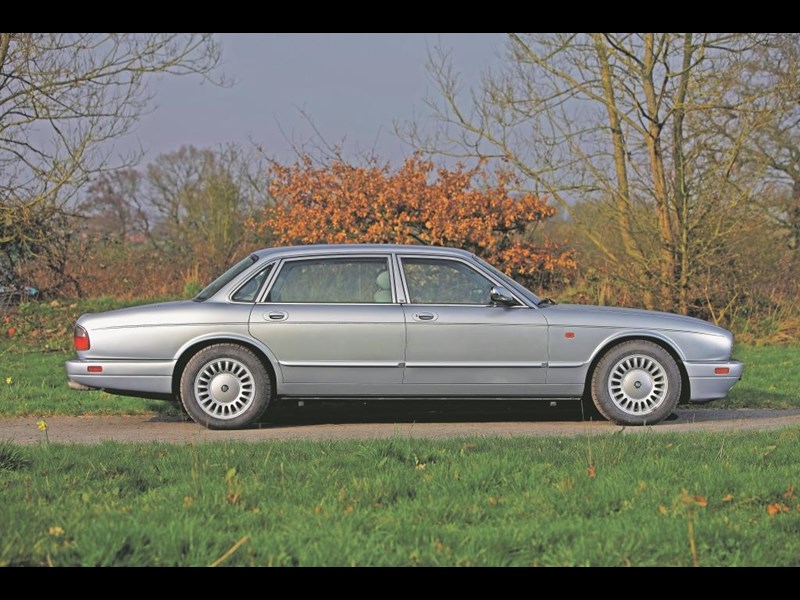The 'classic' Range Rover. Is it worth it?
My boss has a couple of dodgy old long wheelbase Range Rovers which he raves about. He needs two, he tells me, because one is always being repaired! Yesterday he took me for a spin in one of them (wouldn’t let me drive his precious ‘collector’s item’). It was like being driven around in a wardrobe. On Wednesday I had a conversation with Richard H-E about a Series 1 1970 Range Rover that sold for £10.5k last week at Richard Edmond’s latest auction. Then later on Wednesday I read something about Land Rover posting record profits this year largely as a result of a 30% increase in Range Rover sales. As a result my blog this week is a feature on the Range Rover. I actually love driving modern Range Rovers as they are capable of going off road despite having some fairly fancy technology going on. Not only that but they’re quick on the roads and provide you with that feeling that you can destroy all lesser mortals that get in your way. They’re good cars hence the sales figures and the only downside I can see with the current Range Rover selection - with tinted windows - is that they will make you look like a drug dealer. Until this week I must confess that ‘classic’ Range Rovers were a car I had never really given much thought to. But when I did I was stuck on the idea that the idea of the Range Rover really was a flash of brilliance. I imagine a board meeting at British Leyland going something like this; Designer -‘Sir, I’ve been thinking about it, Land Rovers are great if you’re in the army or you’re a farmer but if you value your eardrums and your spine they’re not quite so brilliant.’ Chairman – ‘Ok so what should we do about it? Create a load of SUVs or pickups and turn Britain into a country of ghastly cowboys?’ Designer – ‘Oh no, we may not be American but I’m sure we can still come up with a car that is frightening when cornering but will appeal to rich British people. Think about it, rich people have money, unlike the rest of BL we should probably try to make something that makes money, let’s just design a Landy, but a bit posher.’ Chairman – ‘I don’t know how I feel about creating a profitable British car but the rest of what you said made sense. Do it, but so people know it’s British make sure it rusts like no tomorrow and ensure none of the panels meet up properly.’ When you look at the Range Rover from a business sense it really is a fantastic idea that I don’t think has been afforded enough credit. The Range Rover has always been good off road and even the early ones are surprisingly practical on the road. For rural Britain in the early 70s you can easily see why this would have caught on. When launched it was loved by the motoring press as it really was equally capable both on and off the road. It was sturdy and its 4 wheel drive was easily capable of handling most off road situations. On the roads it would go from 0-60 in 15 seconds which in 1970 was about standard for a normal car. In addition it could reach 95mph proving it a sensible option for motorway cruising. I drove a 1985 Range about 2 years ago on a motorway and although I wouldn’t describe it as pleasant (little bit twitchy over 60mph) it was a much nicer experience than driving a 1985 998 Mini Mayfair on the same road. To try to make this relevant for today and for collectors I searched our auction database to look at values. Two years ago very similar Range Rovers were making only 2/3rds what they are today and I’ve spoken to several classic dealers over the last year who said these are cars to watch out for. Early series 1s from 1970 are usually the most collectible and tend to be the most valuable of any pre 96 Range Rover. Looking at how things are going though I can see 80s and early 90s Range Rovers really starting to pick up in value. I would almost guarantee you that any landowner with 10 acres or more in the UK will have one rolling around somewhere. A modern Range Rover may be very capable off roads but when was the last time you saw one that wasn’t driving around either West London or the Home Counties? Very few people who own a new Range Rover would even contemplate driving it through muddy fields, which is a shame because it is eminently capable of doing so. Old Range Rovers on the other hand are consistently covered in mud. It’s as if the classic Range actually thinks it’s a rugby player. As these were built by British Leyland it is understandable that build quality may not be 100% (apparently they’re worth more if you find an original decomposed sandwich under the passenger seat) but although not conventional this car shouldn’t be ignored as a classic. Look at our auction database over the last couple of years and you’ll see how values are rising, but looking on CCFS you’ll also see you can still pick these up for very low sums. If you don’t believe me spend £2k on a 80s Range and go to the nearest field you can find, (with the owner’s permission of course), then go absolutely nuts. I’d be surprised if you ever find a car you can have more fun in for this kind of money. That’s it from me this week but next week I’ll be back with an investigation into some of the seedier practices taking place with sellers of classic cars. Phil philcooper@classiccarsforsale.co.uk






























